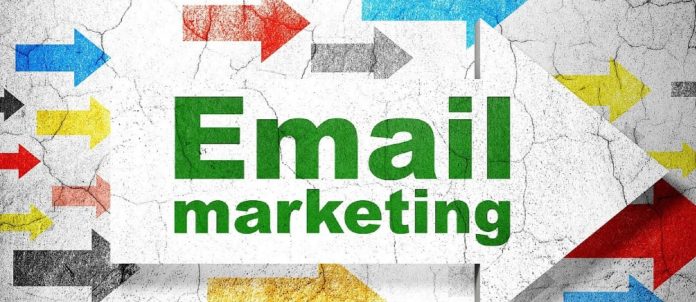Introduction to Email Marketing: A Guide for Beginners
Email marketing is a powerful tool that businesses can use to reach their target audience and promote their products or services. It involves sending marketing messages and promotional content to a list of subscribers via email.
Email marketing is a highly effective way to engage with potential and existing customers, build brand awareness, and generate leads and sales.
For beginners, email marketing can seem like a daunting task, but with the right strategy, tools, and techniques, it can be easy and highly rewarding.
In this guide, we will cover the basics of email marketing, including defining your target audience, crafting compelling email subject lines, designing engaging email content, using effective call-to-action strategies, ensuring email deliverability, analyzing and optimizing email campaign performance, creating an email marketing calendar, integrating email marketing with other marketing channels, and staying up-to-date with email marketing best practices.
By the end of this guide, you will have a solid understanding of email marketing and how it can help your business achieve its marketing goals.
Defining Your Target Audience: Key to a Successful Email Marketing Campaign
Defining your target audience is a crucial step in creating a successful email marketing campaign. Knowing your target audience helps you tailor your messages and content to their specific needs and interests, increasing the likelihood of engagement and conversions.
To define your target audience, you need to conduct market research and gather data on your potential customers. This includes demographics such as age, gender, location, income, and education level, as well as psychographics such as interests, values, and behavior.
Once you have a clear understanding of your target audience, you can segment your email list based on these characteristics and personalize your messages to each group.
For example, if you’re targeting a younger audience, you might use more informal language and trendy design elements, while if you’re targeting an older audience, you might use a more professional tone and simpler design.
By defining your target audience and creating personalized messages, you can increase the relevance and effectiveness of your email marketing campaign, ultimately leading to higher engagement and conversions.
Crafting a Compelling Email Subject Line
Crafting a compelling email subject line is essential to ensure your email gets opened and read. The subject line is the first thing your recipient sees, so it needs to grab their attention and entice them to open the email. Here are some tips for crafting a compelling email subject line:
- Keep it concise: Your subject line should be short and sweet, ideally no longer than 50 characters.
- Be specific: Let the recipient know what the email is about. Avoid vague or generic subject lines like “Important” or “Update.”
- Use action-oriented language: Use strong verbs to create a sense of urgency or excitement. For example, “Act now to save 50% on your next purchase.”
- Personalize it: Use the recipient’s name or reference previous interactions to make the subject line more personal and relevant.
- Test it: Experiment with different subject lines and track the open rates to see what works best.
By following these tips, you can craft a compelling email subject line that stands out in a crowded inbox and increases the chances of your email being opened and read.
Designing Engaging Email Content
Designing engaging email content is essential to keep your audience interested and involved in your brand. Your email content needs to be visually appealing, easy to read, and provide value to your subscribers. Here are some tips for designing engaging email content:
- Use visual elements: Incorporate images, videos, and graphics to break up text and make your emails more visually appealing.
- Keep it simple: Use a clean, uncluttered layout with easy-to-read fonts and clear calls to action.
- Be concise: Keep your content brief and to the point and use bullet points or numbered lists to highlight key points.
- Provide value: Make sure your content is relevant to your audience and provides value, whether that’s in the form of information, promotions, or exclusive content.
- Use personalization: Use dynamic content and personalization to tailor your emails to the interests and behaviors of your subscribers.
By following these tips, you can design engaging email content that captures the attention of your audience and keeps them engaged with your brand. Remember to test your content regularly and track engagement metrics to optimize your email campaigns.
Call-to-Action Strategies for Email Marketing
Call-to-Action (CTA) strategies are essential in email marketing campaigns as they guide subscribers to take the desired action.
A well-designed CTA can increase click-through rates and conversions, while a poorly crafted CTA can result in missed opportunities. Here are some effective CTA strategies for email marketing:
- Be clear and concise: Your CTA should be short, clear, and to the point. Use actionable language that tells subscribers what they can expect when they click on the button.
- Use contrasting colors: Use colors that stand out from the rest of the email to make the CTA more noticeable and attractive.
- Place the CTA above the fold: The CTA should be visible without having to scroll down the email. Place it near the top to increase visibility.
- Use urgency: Use words like “limited time offer” or “act now” to create a sense of urgency and encourage subscribers to take action.
- Test and optimize: With the help of the expert web design company consider to test different CTA designs, copy, and placements to see what works best for your audience. Optimize your CTAs based on engagement metrics and feedback.
By implementing these CTA strategies, you can increase engagement and conversions in your email marketing campaigns, which also an essential part of digital marketing courses.
Email Deliverability: Ensuring Your Emails Reach Your Subscribers
Email deliverability is crucial in email marketing as it ensures that your emails reach your subscribers’ inboxes.
There are several factors that can affect email deliverability, including email content, sender reputation, and email service provider (ESP) policies. Here are some strategies to ensure your emails reach your subscribers:
- Follow email marketing best practices: Use a reputable ESP, comply with anti-spam laws, and avoid spam trigger words and phrases.
- Maintain a clean email list: Remove inactive and bounced email addresses regularly to maintain a high-quality email list.
- Use authentication: Implement authentication protocols like Sender Policy Framework (SPF), DomainKeys Identified Mail (DKIM), and Domain-based Message Authentication, Reporting & Conformance (DMARC) to verify your domain’s identity.
- Monitor your sender reputation: Monitor your sender reputation regularly and take action if it declines. Maintain a good reputation by sending relevant, valuable content to engaged subscribers.
- Test your emails: Test your emails using tools like email previews and spam tests to ensure they look good and don’t trigger spam filters.
By following these strategies, you can increase your email deliverability and ensure your emails reach your subscribers’ inboxes, increasing the effectiveness of your email marketing campaigns.
Analyzing and Optimizing Email Campaign Performance
Analyzing and optimizing email campaign performance is crucial to ensure that your email marketing efforts are effective and drive results.
There are several metrics to track and analyze to optimize your email campaigns, including open rates, click-through rates, conversion rates, and unsubscribe rates. Here are some strategies for analyzing and optimizing email campaign performance:
- Identify the key metrics: Identify which metrics are most important for your campaign goals and track them consistently.
- Segment your audience: Segment your email list based on subscriber behavior and interests to tailor your content and increase engagement.
- Test and optimize: Test different email elements like subject lines, CTA copy, and send times to optimize your campaigns based on engagement metrics.
- Monitor your sender’s reputation: Monitor your sender reputation and act if it declines. A poor reputation can affect email deliverability and campaign performance.
- Learn from data: Use data insights to learn what works and what doesn’t and adjust your email marketing strategy accordingly, which is also an crucial part of digital marketing courses.
By analyzing and optimizing email campaign performance, you can increase engagement, conversions, and ROI in your email marketing campaigns.
Creating an Email Marketing Calendar
Creating an email marketing calendar is essential to plan and execute successful email campaigns. It helps ensure that you have a consistent flow of email content that aligns with your business goals and keeps your subscribers engaged. Here are some steps to create an effective email marketing calendar:
- Identify your goals: Determine the purpose of your email marketing campaigns and set specific goals for each campaign.
- Define your audience: Identify your target audience and segment your email list based on their interests and behaviors.
- Plan your content: Brainstorm ideas for email content that align with your goals and audience. Create a content calendar that outlines the frequency and type of emails you’ll send.
- Assign responsibilities: Determine who will be responsible for creating and executing each email campaign.
- Schedule your emails: Use an email marketing platform to schedule your emails in advance and ensure they’re sent at the appropriate times.
- Monitor and adjust: Monitor the performance of your email campaigns regularly and adjust your calendar and content accordingly.
By creating an email marketing calendar, you can ensure that your email campaigns are well-planned and executed, increasing their effectiveness, and driving results for your business.
Integrating Email Marketing with Other Marketing Channels
Integrating email marketing with other marketing channels is an effective way to maximize the impact of your marketing efforts now a days which also plays an essential role in SEO companies and increase your reach. Here are some strategies for integrating email marketing with other marketing channels:
- social media: Include social sharing buttons in your emails and encourage subscribers to share your content on social media. Use social media to promote your email campaigns and drive email sign-ups.
- Website: Use your website to promote your email campaigns and encourage visitors to subscribe to your email list. Use tactics of klaviyo email marketing agency to drive traffic to your website and promote your products or services
- Paid advertising: Use email marketing to target users who have interacted with your paid ads or use paid advertising to promote your email campaigns.
- Content marketing: Use email marketing to promote your content marketing efforts, such as blog posts, webinars, and ebooks. Use content marketing to provide valuable content to your email subscribers and nurture them into customers.
- Events: Use email marketing to promote your events and drive attendance. Use events to capture email addresses and grow your email list.
By integrating email marketing with other marketing channels, you can create a cohesive marketing strategy that reaches more potential customers and increases your chances of converting them into customers.
Staying up to date with Email Marketing Best Practices
Staying up to date with email marketing best practices is crucial to ensure that your email campaigns are effective and comply with industry standards. The email marketing landscape is constantly evolving, and best practices can change quickly. Here are some strategies for staying up to date with email marketing best practices:
- Read industry publications: Subscribe to industry publications like Email Marketing Daily, Litmus, and Email on Acid to stay up to date on email marketing news and best practices.
- Attend webinars and conferences: Attend webinars and conferences to learn about the latest trends and best practices in email marketing.
- Follow industry leaders: Follow industry leaders on social media and subscribe to their blogs to learn from their insights and expertise.
- Join online communities: Join online communities like the Email Geeks Slack group or the Email Marketing Hub Facebook group to connect with other email marketers and learn from their experiences.
- Test and experiment: Continuously test and experiment with your email campaigns to learn what works and what doesn’t and adjust your strategy accordingly.
By staying up to date with email marketing best practices, you can ensure that your email campaigns are effective, engaging, and compliant, driving results for your business.
About the Author
Kashish Mehta is a Digital Marketing Expert and an Outreach Specialist at Brandveda. She loves to talk about SEO, content marketing & digital marketing strategies. In her free time, she likes to read & stay updated on the latest digital marketing trends! You can always reach out to kashish on LinkedIn.


































